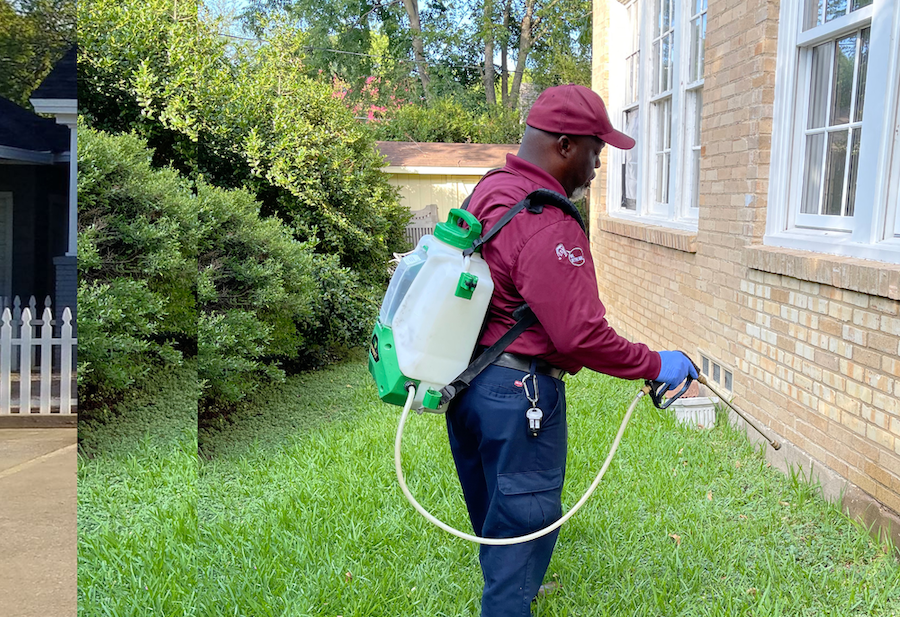Specialist A1 Charlotte Bed Bug Exterminator - High Quality Service Assured
Specialist A1 Charlotte Bed Bug Exterminator - High Quality Service Assured
Blog Article
Bed Bug Treatment Break Down: Contrasting Chemical Vs. Non-Chemical Solutions
In the world of insect control, particularly when dealing with the consistent problem of bed bugs, the choice in between chemical and non-chemical therapy options can be a crucial one. Both strategies supply distinctive advantages and disadvantages, affecting variables such as efficiency, security considerations, and general price. By taking a look at the nuanced information of each technique, a more clear understanding of which course to seek in attending to a bed insect problem can be acquired.
Performance of Chemical Therapies
Chemical therapies for bed bug infestations have actually been extensively identified for their potent and quick efficacy in getting rid of these insects. When taking into consideration the performance of chemical therapies, it is important to recognize that they can provide a comprehensive and quick solution to a bed pest trouble.
Furthermore, chemical therapies have the advantage of providing residual effects, implying that they can remain to get rid of bed insects even after the first application. This residual activity is especially beneficial in combating any kind of potential re-infestations. Furthermore, the quick activity of chemical treatments can bring relief to people facing extreme bed bug invasions, enabling them to regain control of their space swiftly.
Safety Interest In Chemical Solutions
One important aspect that requires cautious consideration when making use of chemical options for bed insect treatment is guaranteeing the safety of residents and the environment. Exposure to specific chemicals made use of in bed pest treatments can lead to breathing concerns, skin irritation, or various other negative responses, specifically in people with pre-existing conditions or level of sensitivities.
Additionally, the environmental influence of chemical remedies is one more considerable factor to consider. Some chemicals used in bed pest therapies might be harmful to helpful insects, wild animals, and environments if they seep into the soil or water supply. It is important to make use of chemical treatments deliberately, following safety and security guidelines, and thinking about less poisonous choices to alleviate these threats and guarantee the risk-free and reliable monitoring of bed pest problems.
Benefits of Non-Chemical Strategies
Thinking about the prospective security problems and environmental influence connected with chemical options for bed bug treatment, discovering non-chemical strategies offers an encouraging option with numerous unique advantages. Non-chemical techniques offer a safer alternative for homes, specifically those with children, pet dogs, or individuals delicate to rough chemicals. These techniques get rid of the threats of direct exposure to hazardous materials, reducing the possibility for unfavorable wellness impacts. Furthermore, non-chemical therapies are eco-friendly, as they do not contribute to air or water air pollution, making them a lasting option for bug control.
Additionally, non-chemical remedies can be efficient in targeting bed insects, consisting of hard-to-reach locations where chemical therapies may not permeate - A1 bed bug exterminator charlotte. Methods such as warmth therapy, vacuuming, steam cleansing, and cushion coverings provide complete eradication without the usage of hazardous chemicals.
Limitations of Non-Chemical Treatments

Furthermore, non-chemical treatments usually need numerous applications to achieve effective elimination. This can be time-consuming and might not constantly assure complete removal of all bed bugs and their eggs, especially in hard-to-reach or covert places.
Additionally, the success of non-chemical therapies heavily counts on appropriate application and thoroughness, which can redirected here be testing for people without professional know-how. Inadequate application of non-chemical techniques may cause incomplete elimination, bring about persistent problems and the demand for added treatments.
Therefore, while non-chemical treatments have their advantages, it is vital to acknowledge these limitations and consider them when establishing the most reliable method for managing bed insect infestations.
Cost Comparison: Chemical Vs. Non-Chemical Options
Given the constraints associated with non-chemical therapies, a vital facet to assess in the context of bed pest management is the cost contrast in between chemical and non-chemical options. In contrast, non-chemical treatments pop over to this site like warm treatment or heavy steam can be a lot more costly, with prices ranging from $1,000 to $6,000 for an entire home. While the initial cost of chemical therapies may seem lower, multiple therapies might be required to completely remove the problem, possibly raising the general price.
Conclusion

Thinking about the prospective safety problems and environmental impact connected with chemical solutions for bed bug therapy, discovering non-chemical techniques offers an encouraging choice with a number of distinct advantages.Given the constraints linked with non-chemical therapies, a crucial aspect to evaluate in the context of bed pest management is the cost comparison between chemical and non-chemical options. In contrast, non-chemical treatments like heat therapy or heavy steam can be much more costly, with costs ranging from $1,000 to $6,000 for a whole home. While the preliminary cost of chemical treatments may seem reduced, several therapies might be called for to totally eradicate the invasion, possibly enhancing the total price.In verdict, when contrasting chemical and non-chemical bed insect therapy choices, it is essential to consider efficiency, safety, benefits, limitations, and imp source expense.
Report this page